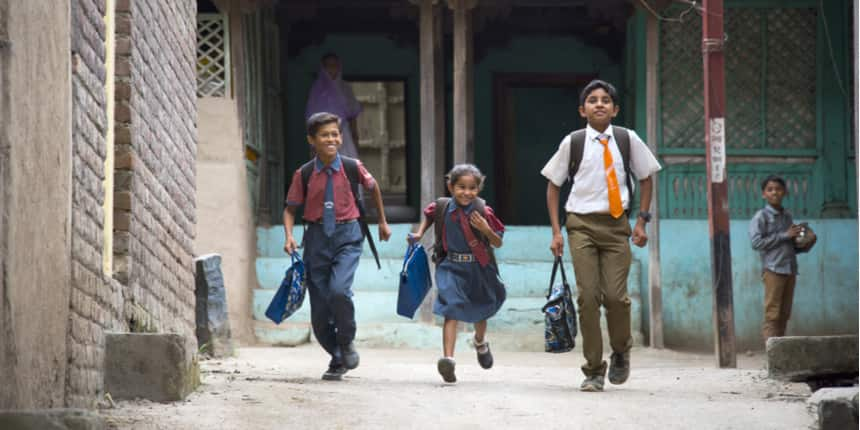Centre plans to roll out ‘National Credit Framework’ from Class 5 to PhD
R. Radhika | July 28, 2022 | 02:23 PM IST | 3 mins read
National Credit Framework fixes the number of “notional learning hours” per year for school, UG, PG. Sports, music will also fetch credits.

NEW DELHI: Come August, the ministry of education is planning to introduce a “National Credit Framework,” or NCrF at the school level, starting from Class 5. The credit framework will consider both academic and extracurricular activities like sports, yoga and music for assessment.
The credit-based framework is already being introduced in higher education institutions by the University Grants Commission (UGC) and the All India Council for Technical Education (AICTE).
As per the minutes of a July meeting of the National Council of Vocational Education and Training (NCVET) accessed by Careers360, the framework proposes 1,200 “notional learning hours” in a year for the assignment of credits in school education, higher education and vocational studies. For early school education, 800 to 1,000 hours have been proposed in the draft finalised on July 13.
The NCrF has been drafted by a high-level committee including members from the education ministry and autonomous bodies under it – UGC, AICTE, Central Board of Secondary Education (CBSE), National Council for Educational Research and Training (NCERT), National Institute of Open Schooling (NIOS) – and the ministry of skill development along with Directorate General of Training (DGT) and NCVET. The government will put the document for public comment in July-end. The NCrF is expected to be implemented phase-wise from August.
Also Read| ‘Person, not anatomy’: How disabled MBBS students fight challenges in medical colleges
The committee has already finalised the draft report on aspects of academic equivalence, multiple entry and exit, and operationalisation of the credit framework that goes up to PhD level. Currently, the panel is consulting state and central universities, and state governments.
NCrF 2022 course credit system: Class 5 to PhD
Academic or course credits are points assigned to students typically based on the number of hours of study, performance in assessments and similar factors. The system leads to the student being awarded a “grade-point average” at the end of a course. Having an entire system follow the same framework for awarding course credits allows smoother transitions within it. The Classes 10 and 12 board exams will continue to play an important role.
Also Read| NMMSS Scholarships for poor children dropped 51.9% in five years: Government Data
The framework has assigned credit levels based on the number of years of learning. In Class 5 – primary school – students will be at level-one credit and reach credit level two in Class 8, the end of upper-primary or elementary education.
After this, from secondary-onwards, the credit level will rise by 0.5 for every year of learning, the draft states. Similarly, in Class 10, the student will be at level three and in level four in Class 12.
The four years of undergraduate studies will cover levels 4.5, 5.0, 5.5 and 6.0; and postgraduate studies will cover levels 6.0, 6.5 and 7.0; PhD is at credit level eight, the highest. The MPhil as a research training degree between master’s and doctorate has been already eliminated.
The credits earned for 1,200 hours of learning translate into 40 credits in a year. Students will earn 20 credits in a six-month semester. 30 “notional learning hours” will fetch one credit.
Beyond this, students can also earn extra credits through additional programmes or projects over and above the study scheme. The UGC has allowed students to pursue two full-time degree programmes or a combination of online and offline programmes for this. This framework will be applicable to open and distance learning courses as well.
Also Read| Explainer: How UGC’s dual-degree programme will work – admissions, exams, credits
The committee is also planning to expand the scope of the Academic Bank of Credits (ABC) to include the management of credits at school education. The ABC will be linked to the Digilocker for verification and portability of credits.
NCrF: Credit system assessment components
The draft framework intends to remove “hard separation between curricular and co-curricular” activities. Thus, the total learning hours will include sports and games, yoga, and physical activities, along with classroom teaching and learning, laboratory work, and class projects.
Performing arts like music, art, handicraft work and activities on bagless days will also be considered during the assessment.
The draft also includes yearly exams, class tests, quizzes for assessment and for vocational education and training, skilling, field visits, minor or major projects will be assessed. On-the-job training, internship or any experiential learning will also be included.
Follow us for the latest education news on colleges and universities, admission, courses, exams, research, education policies, study abroad and more..
To get in touch, write to us at news@careers360.com.